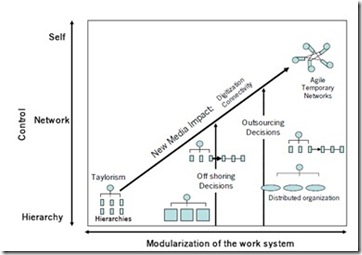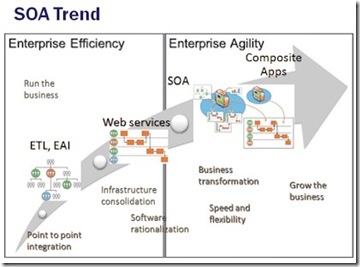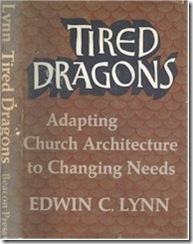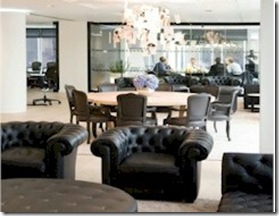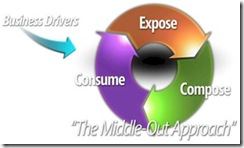The Microsoft Netherlands joint research piece with Erasmus University also cited the seminal work of Thomas W. Malone Robert J. Laubacher’s coining the term E-Lance Economy over 10 years ago in their Harvard Business Review article, ‘The Dawn of the E-Lance Economy.’
“The fundamental unit of the e-lance economy is not the corporation but the individual. Tasks are not assigned and controlled by a stable chain of management but rather are carried out by autonomous or independent contractors. E-lancers connect into fluid and temporary networks to produce and sell goods and services. When the job is done, the networks dissolve again, whereas the e-lancers start seeking for new assignments. Of course, this view still applies to a small portion of the economy yet it is clear that larger parts are moving in this direction.”
One of the aspects to the new world of work that first drew me into the subject was the parallels between the ‘modularization of the work system’ and the modularisation of computer systems. In particular, the parallels with the trend of Services Oriented Architecture (SOA). The slide below is taken from one of my standard decks on SOA. Change a few words and labels and the concepts mirror the Malone/Laubacher chart very closely.
